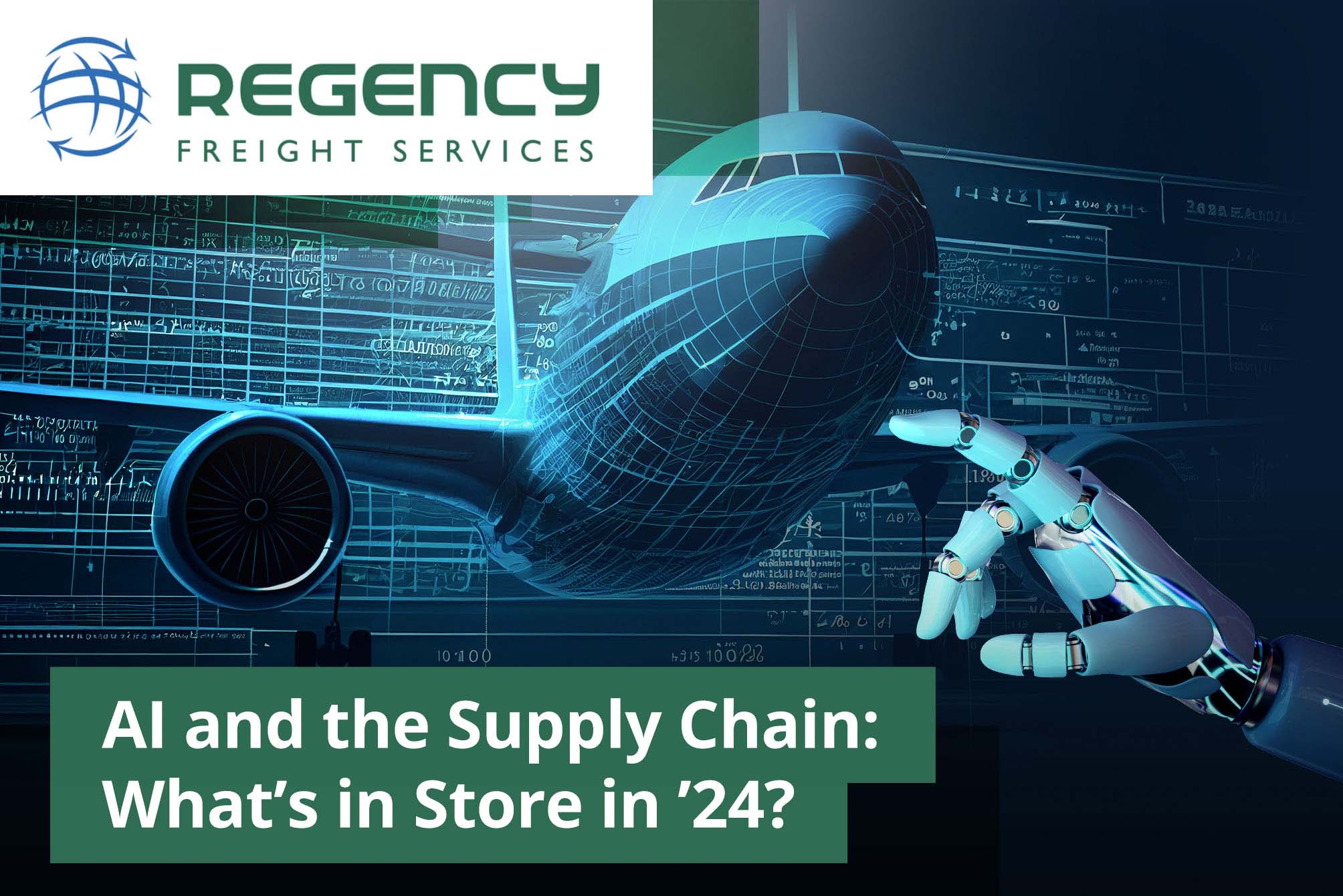AI and the Supply Chain: What’s in Store in ’24?4 Comments21 March 2024
The turbulence of the last few years has left supply chains with a sense of urgency to future-proof their operations. It’s widely accepted that automation and digitization will be at the heart of achieving the resilience, agility, efficiency, and sustainability needed to meet changing demands. But automation employing artificial intelligence isn’t just about headline-grabbing tech like exoskeletons, driverless delivery vehicles and drone shipping. The transportation and logistics industry is still lagging far behind other sectors in taking basic steps toward automation of manual processes. According to Accenture research, 76% of transport and logistics firms believe that a continued lack of focus on digital abilities will seriously damage their business. So what’s the outlook for 2024? Following are some ideas about what lies ahead, and how AI can help business leaders respond to market challenges. A rise in digital agents. The most impactful use of AI in transportation and logistics won’t be in state-of-the-art robotics on the warehouse floor; it will be in the hands of logistics workers. AI-powered software, or “digital agents,” will read and understand the most complex forms such as commercial invoices, bills of lading, waybills and packing lists, to streamline the movement of goods across borders and provide freight forwarders with valuable insights into their data. It will push time-consuming manual paperwork into oblivion and allow bots to do the work more quickly and accurately. A great example of this in action concerns new customs rules at the EU/U.K. border caused by Brexit. A large manufacturer of frozen pastry goods from the EU was able to reduce customs clearance times from one hour to just five minutes by using digital agents, enabling speedy extraction from complex documents with 100% accuracy and submission to national customs systems without the need for any manual review. Specialized AI over general AI. There’s been no escaping the hype of generative AI like ChatGPT, which is being hailed as a game-changer for every industry. While it will have its uses in overcoming some common problems, logistics firms need to be wary of the promises of general-purpose AI models, and not jump in feet first without doing their homework. The faster route to success will be through purpose-built AI that’s architected for the industry, and has the contextual knowledge to operate in it efficiently. In 2024, the focus will likely shift from off-the-shelf generative AI to more specialized, purpose-built AI and machine learning systems that address specific business problems. For example, transport and logistics providers might deploy specialized AI for tasks such as route optimization, demand forecasting and inventory management. Unlike general AI models, these specialized tools could be tailored to the unique challenges and data environments of the logistics sector, yielding more accurate and actionable insights. This allows developers and organizations to narrow their AI use with a high degree of customizability, trimming away excessive features and data that amplify the risk of adverse effects. A global logistics company issuing 44 million bills of lading a year used purpose-built AI to extract data, experiencing high accuracy from the trained AI model despite the documents being processed by at least nine stakeholders at 12 different touchpoints. Another example is Deutsche Post, which gained 70% more efficiency by using specialized AI to automatically extract data from shipping documents to populate downstream systems like transportation management and customs brokerage —all done without excessively costly or energy-consumptive platforms. Carbon-neutral AI development. AI could optimize route planning to minimize fuel consumption or facilitate the efficient operation of electric vehicle fleets. Businesses are also likely to continue grappling with the trade-off between generative AI capabilities and their ecological impact. However, given the concerns about the carbon footprint of large AI models, there will be a significant push toward energy-efficient AI development practices. Companies will need to work on optimizing algorithms to be more energy-efficient. Increased regulatory scrutiny. As AI becomes integral to managing transportation networks, regulatory bodies might enforce stricter standards to ensure data privacy, accuracy of AI predictions, and ethical AI use, especially in autonomous transportation and drone delivery systems. Recently, the Biden administration invoked emergency federal powers to assert oversight of AI systems. The executive order will establish new standards on AI safety and security to protect Americans’ privacy and civil rights, and also help workers whose jobs are threatened by AI. Companies must be aware of the impact of any AI platforms they deploy, not just within their organizations but for those in the entire supply chain. Advances in explainable AI (XAI). As businesses and regulators demand more transparency in AI decision-making, XAI will gain momentum, helping to demystify complex AI models and foster trust among users and stakeholders. The complexity of logistics operations could benefit from XAI, to help stakeholders understand AI-driven decisions better. For instance, explaining how AI determined a particular route or inventory level could build trust and facilitate better human oversight among users and stakeholders. Businesses will also have to address the gaps in understanding between AI teams and the business side of the organizations they serve. Inversely, business users will come to better understand the meaning of AI and the various technologies that support it, such as machine learning, to drive successful outcomes. In summary, 2024 will see a true acceleration of the use of AI in the transport and logistics sector. However, organizations need to be mindful of how they use it, and more importantly, ensure that it enables them to solve specific business challenges. By:Maxime Vermeir |
|
   |
